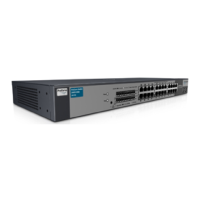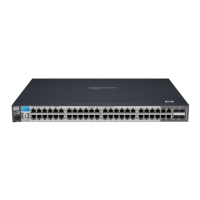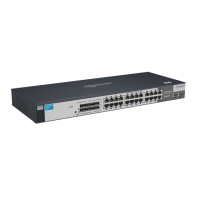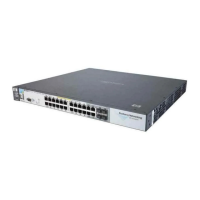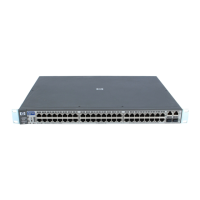6-22
Quality of Service (QoS): Managing Bandwidth More Effectively
Using QoS Types To Configure QoS for Outbound Traffic
For example, configure and list 802.1p priority for the following UDP and TCP
port prioritization:
Figure 6-5. Example of Configuring and Listing 802.1p Priority Assignments on
TCP/UDP Ports
Assigning a DSCP Policy Based on TCP or UDP Port Number
This option assigns a previously configured DSCP policy (codepoint and
802.1p priority) to (IPv4) TCP or UDP packets having the specified port
number. That is, the switch:
1. Selects an incoming IP packet if the TCP or UDP port number it carries
matches the port number specified in the TCP or UDP type (as shown in
figure 6-5, above).
TCP/UDP Port 802.1p Priority
for TCP
802.1p Priority
for UDP
TCP Port 23 (Telnet) 7 7
UDP Port 23 (Telnet) 7 7
TCP Port 80 (World Wide Web HTTP) 2 2
UDP Port 80 (World Wide Web HTTP) 1 1
Indicates 802.1p priority
assignments are in use for
packets with 23 or 80 as a
TCP or UDP Application
port number.
Values in these two
columns define the
QoS types to use for
identifying packets
to prioritize.
Shows the 802.1p priority
assignment for packets
with the indicated QoS
types.
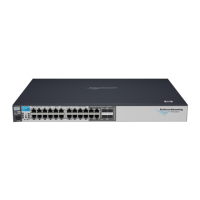
